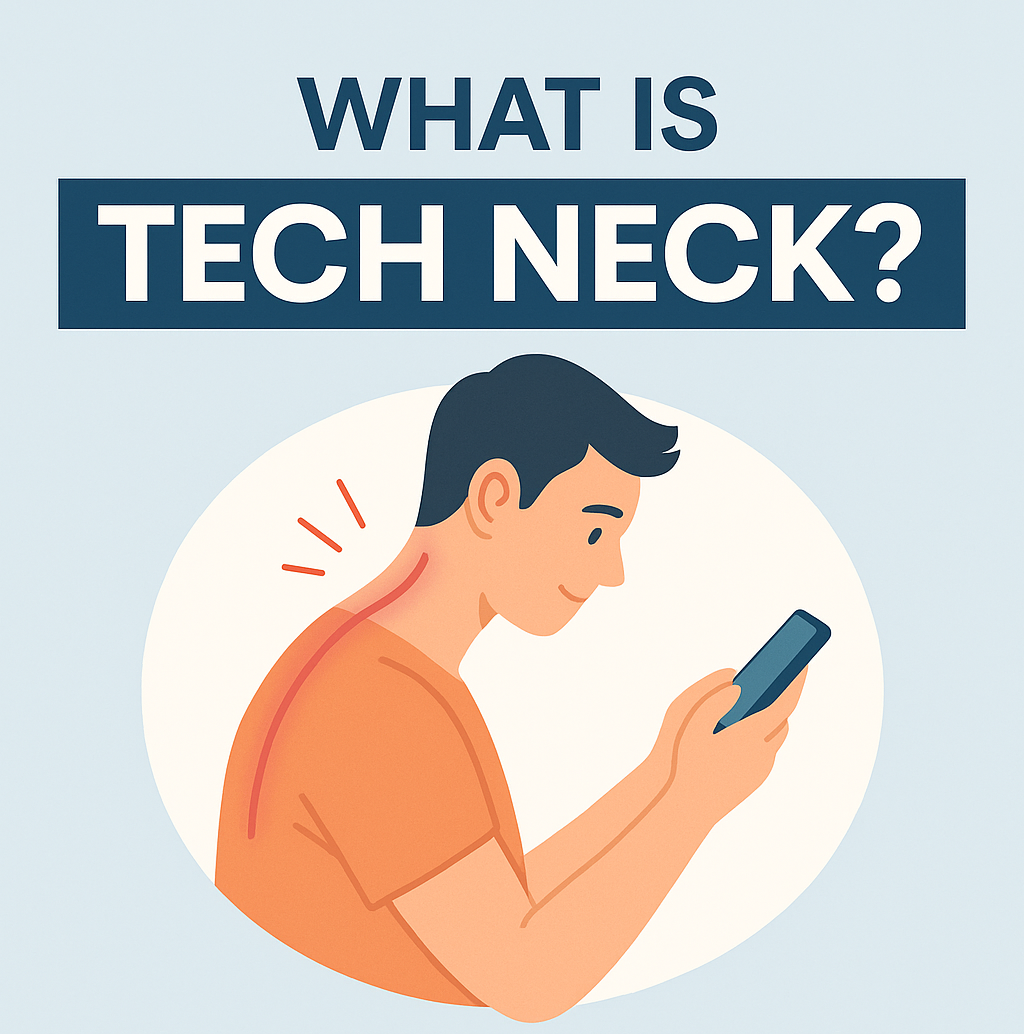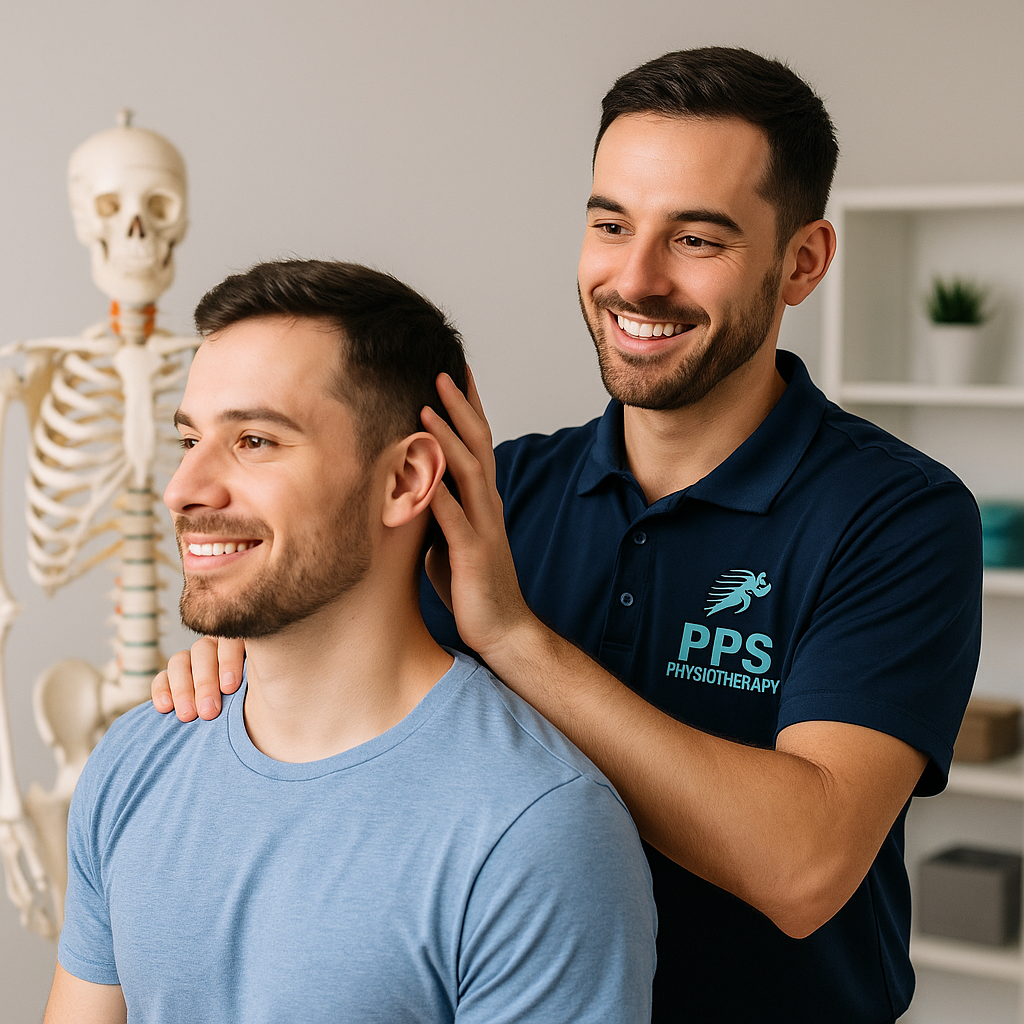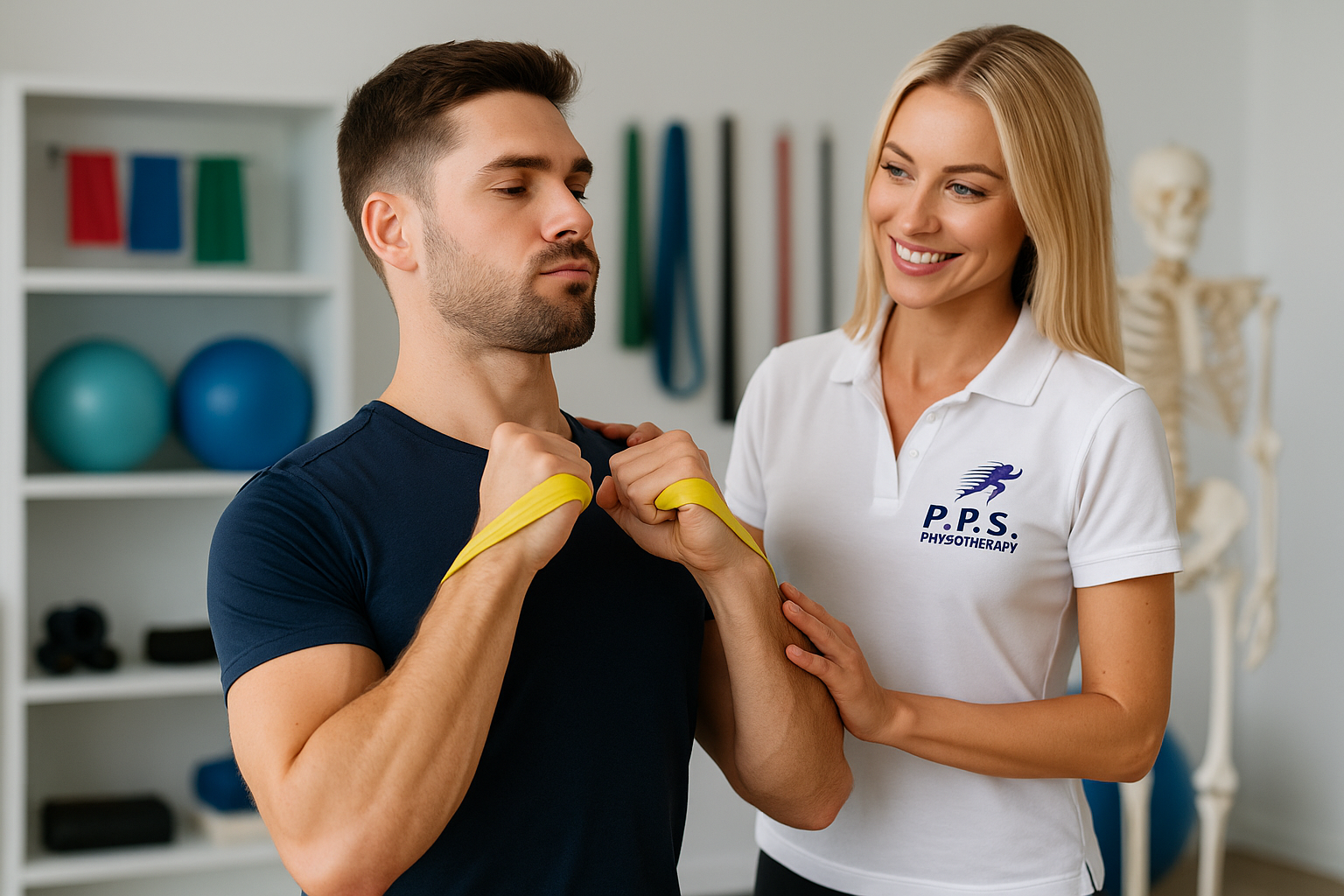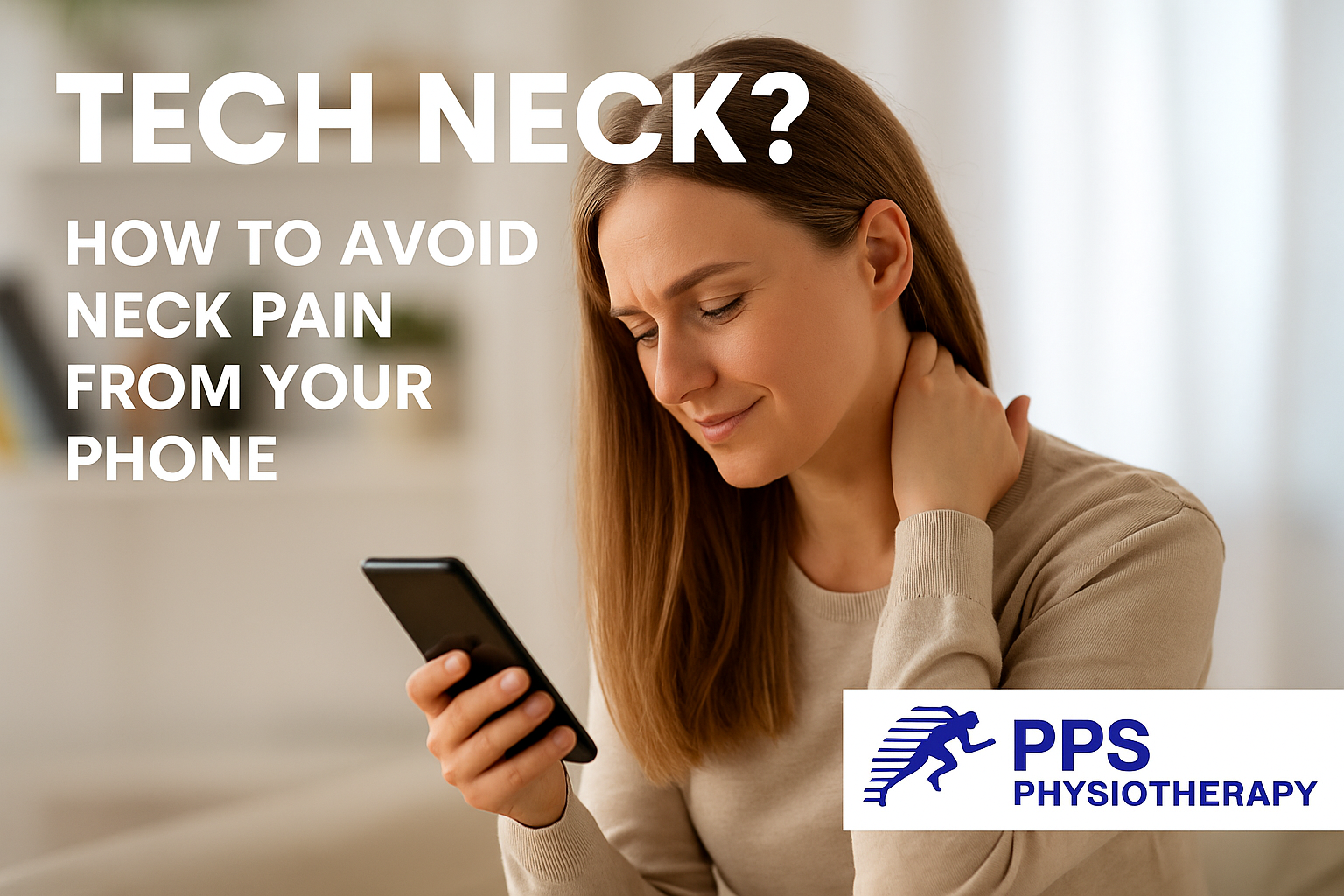A visual guide to understanding Tech Neck — from causes to treatment options at PPS Physiotherapy
The “Tech Neck” Epidemic: Why More Young Adults Are Turning to Physiotherapy
Are you in your 20s or 30s, glued to screens—and suddenly facing neck or shoulder pain? You’re not alone. At PPS Physiotherapy, we specialise in Tech Neck physiotherapy to help locals move better and live pain-free.
At PPS Physiotherapy, we’re seeing a surge in posture-related injuries, especially in locals from Kellyville and Carlingford. It’s not just about stiffness anymore—“Tech Neck” is fast becoming a silent musculoskeletal epidemic affecting younger Australians working remotely or spending long hours on devices.
📉 What Is “Tech Neck” and Why Is It So Common Now?

Tech Neck refers to the forward head posture and upper body strain caused by prolonged screen use. It’s particularly common in:
- People working from home
- University students
- Young professionals using phones and laptops all day
Common symptoms include:
- Stiff neck and shoulder pain
- Headaches behind the eyes or base of skull
- Upper back tension and poor posture
- Wrist and forearm tightness from poor typing angles
📊 The Link Between Remote Work and Pain

Since 2020, remote work has exploded—and so have neck and shoulder complaints. Many clients from the Hills District and Parramatta area are working from makeshift desks or dining tables, creating:
- Unsupported lower backs
- Unnaturally low screens
- Muscle overload from long static postures
Without correction, this leads to long-term spinal issues and chronic pain—even in otherwise healthy young adults.
Recent research confirms that Tech Neck is becoming increasingly common in both younger adults and working professionals, especially those spending long hours on screens. A 2024 study published in The Journal of Biomechanics highlights the link between prolonged digital device use and changes in cervical spine posture and muscle tension.
🛠️ How PPS Physiotherapy Can Help with Tech Neck Using Physiotherapy

- Postural Assessment – We analyse your head position, shoulder alignment, spine curve, and sitting habits
- Manual Therapy – Soft tissue release and mobilisation to reduce tension
- Exercise Rehab – Strengthen weak postural muscles like deep neck flexors, glutes, and mid-back
- Ergonomic Advice – We teach you how to set up your desk, chair, and monitor correctly
- Movement Strategies – Custom micro-break routines to reset your posture throughout the day
🎓 Real Stories from PPS Patients
“I was spending 8 hours a day working from my kitchen bench. After 3 sessions, I could feel a huge difference in my posture and daily pain.” – Emma, 28
“My daily headaches were caused by screen posture. The PPS team showed me what to fix—and the pain is gone.” – Luke, 34
✅ Top 5 Daily Tips to Beat Tech Neck
- Raise your screen to eye level
- Keep your chin slightly tucked—don’t crane forward
- Use a supportive chair with lumbar support
- Take 2-minute breaks every 30 minutes: stretch, walk, reset
- Do 5 shoulder rolls every hour to release tension
📞 Book a Postural Assessment Today
If you’ve been working from home or spending long hours on screens, don’t wait until the pain worsens. Our physiotherapists can help you fix the issue early—and prevent future injury.
- Call Kellyville: (02) 9672 6752
- Call Carlingford: (02) 9871 2022
- Book Online: ppsphysiotherapy.com.au
The PPS Physiotherapy Difference
We don’t just treat your pain—we address the underlying cause with a modern, practical, and personalised approach. Whether you’re working from home in Kellyville, commuting from Carlingford, or studying full-time, we’re here to get your body back in balance.

